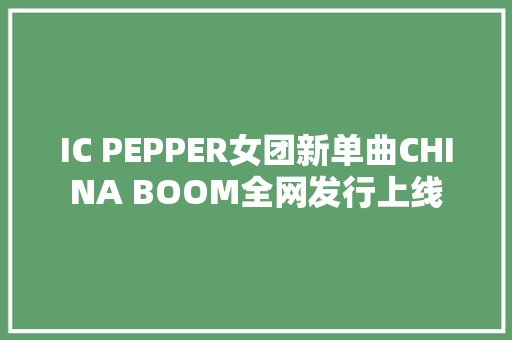研究职员表示,在过去几十年中,盛行歌曲变得越来越愤怒和悲哀,表达快乐的歌词却减少了。
Pop songs have become angrier and sadder over the past 60 years, experts say.

专家表示,在过去60年里,盛行歌曲变得越来越愤怒和悲哀。
Researchers analyzed lyrics in best-selling songs from the 1950s to 2016 to find expressions of anger and sadness had increased, while words about joy had dropped.
研究职员剖析了上世纪50年代至2016年脱销歌曲的歌词,创造表达愤怒和悲哀的歌词增加了,而表达快乐的歌词减少了。
best-selling ['best'seliŋ]:adj.最脱销的
The US study team looked at lyrics of more than 6,000 songs from Billboard Hot 100 in each year.
美国研究小组对每年登上“公告牌百强单曲榜”的六千多首歌曲的歌词进行了研究。
These are the most popular songs in the US each year as chosen by music fans.
这些歌曲都是由音乐粉丝们保举出来的美国年度最受欢迎歌曲。
In the past songs were ranked mainly by record sales, radio and jukebox plays, but more recently it is based on other popularity indicators such as streaming and social media to reflect changes in music consumption.
过去,歌曲的排名紧张看唱片销量、电台和点唱机播放量,但比来的排名是基于其他受欢迎程度指标,比如流媒体和社交媒体播放量,以反响音乐消费的变革。
jukebox ['dʒuːkbɒks]:n. 自动唱机
Tones expressed in each song were analyzed using 'automatic quantitative sentiment' which looked at each word or phrase in the song with a set of tones they express.
研究职员利用“自动量化感情”对每首歌中表达的语气进行了剖析。“自动量化感情”用一组语气来剖析歌曲中的每个单词或词组。
The combination of the tones expressed by all words and phrases of the lyrics determines the sentiment of that song.
歌词中的所有单词和词组所表达的语气结合在一起,就决定了这首歌的感情。
The sentiments of all Billboard Hot 100 songs in each year are averaged and the average of each year measured whether the expression of that sentiment increased, decreased or remained the same.
研究职员将每年“公告牌百强单曲榜”上的全部歌曲表达的各种感情进行均匀,根据每年的均匀值来衡量某种感情的表达是增加了、减少了还是保持不变。
The analysis showed the expression of anger in popular music lyrics has increased gradually over time.
剖析表明,随着韶光的推移,盛行音乐歌词中愤怒的表达逐渐增加。
Study co-author Lior Shamir, of Lawrence Technological University in Michigan, said: 'The change in lyrics sentiments does not necessarily reflect what the musicians and songwriters wanted to express, but is more related to what music consumers wanted to listen to in each year.'
研究报告的作者之一、密歇根劳伦斯理工大学的利奥尔·沙米尔说:“歌词感情的变革未必反响了音乐人和词作者想要表达的内容,而更多的是与音乐消费者每年想听什么有关。”
Songs released during the mid 1950s were the least angry and the anger expressed in lyrics has increased gradually until peaking in 2015.
上世纪50年代中期发布的歌曲是最不愤怒的,此后歌词表达的愤怒逐渐增加,2015年达到顶峰。
In the mid 1990s, songs became angrier and the increase in anger was sharper during that time in comparison to previous years.
在上世纪90年代中期,歌曲变得更加愤怒,而且与之前的一些年比较,愤怒感情增加的程度更明显。
The expression of sadness, disgust and fear also increased over time, although the increase was milder compared to the increase in the expression of anger.
表达悲哀、反感和恐怖的歌词随着韶光的推移也逐渐增加,但增加的程度不及表达愤怒的歌词。
Disgust increased gradually, but was lower in the early 1980s and higher in the mid and late 1990s.
表达反感情绪的歌词逐渐增加,在上世纪80年代早期增加的速率缓慢,在90年代中后期增加速率变快。
Popular music lyrics expressed more fear during the mid 1980s and the fear decreased sharply in 1988.
在上世纪80年代中期,盛行歌曲歌词表达出更多的恐怖感情,在1988年这种恐怖感情的表达快速下滑。
Another sharp increase in fear was observed in 1998 and 1999, with a sharp decrease in 2000.
另一次恐怖感情的快速增长涌如今1998年至1999年,继而在2000年快速下滑。
The study also showed that joy was a dominant tone in popular music lyrics during the late 1950s, but it decreased over time and became much milder in the recent years.
研究还创造,在上世纪50年代晚期,快乐是盛行音乐歌词的主旋律,但随着韶光的流逝,快乐的歌词越来越少,近年来表现趋平。
An exception was observed in the mid 1970s, when joy expressed in lyrics increased sharply.
而上世纪70年代中期是个例外,歌词中的快乐感情迅速上升。
The study shows that the tones expressed in popular music change over time and the change is gradual and consistent, with a few exceptions.
研究创造,盛行歌曲表达的感情随着韶光的变革而改变,这种改变是渐进和连贯的,个中偶有例外。
Since the researchers analyzed the most popular songs in each year, the study does not show that music changed, but that the preferences of music consumers have changed over time.
研究职员剖析了每年的最盛行歌曲,研究并未表明音乐在改变,而是音乐消费的偏好随着韶光而改变。
While music fans preferred joyful songs during the 1950s, modern music consumers are more interested in songs that express sadness or anger.
上世纪50年代的乐迷偏爱欢畅的歌曲,而当代音乐消费者对表达悲哀或愤怒的歌曲更感兴趣。
The findings appear in the Journal of Popular Music Studies.
这一创造揭橥在《盛行音乐研究杂志》上。
英文来源:逐日邮报
翻译&编辑:yaning
来源:中国日报网









